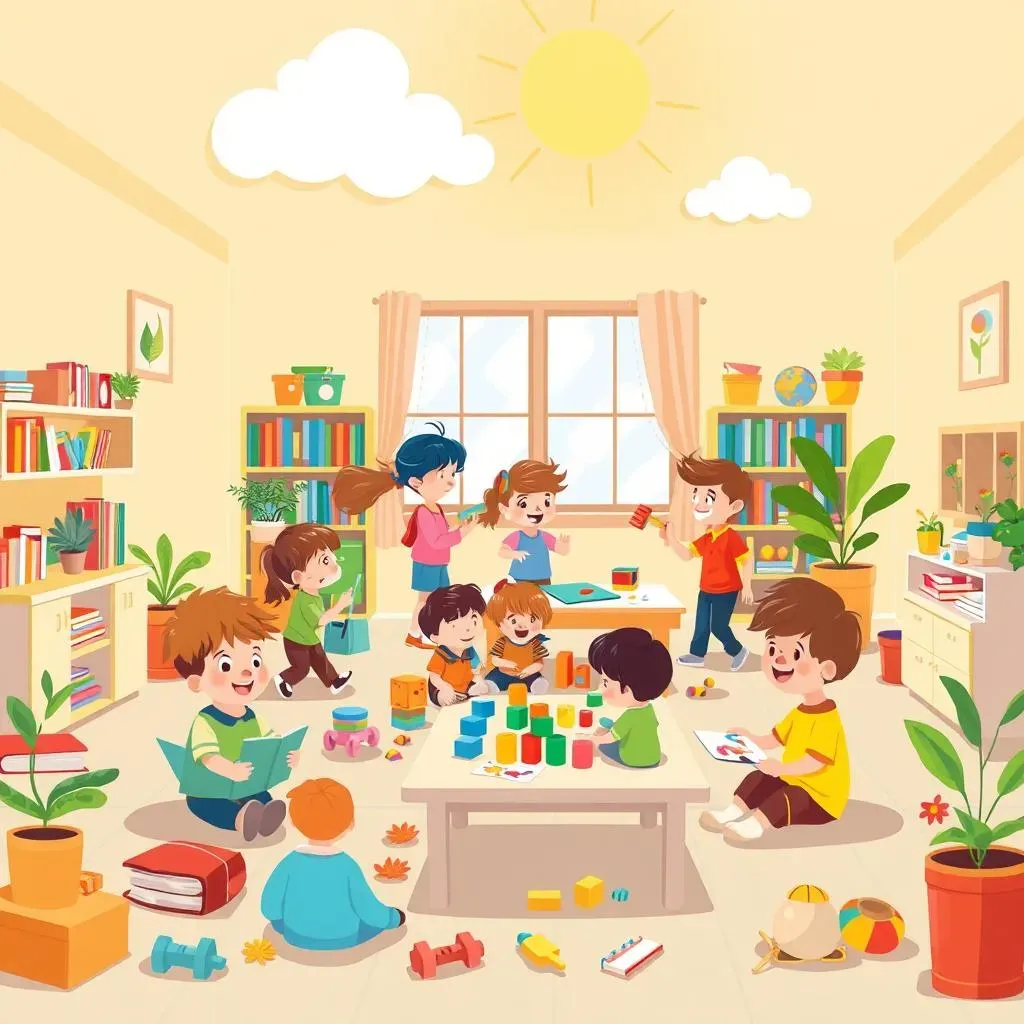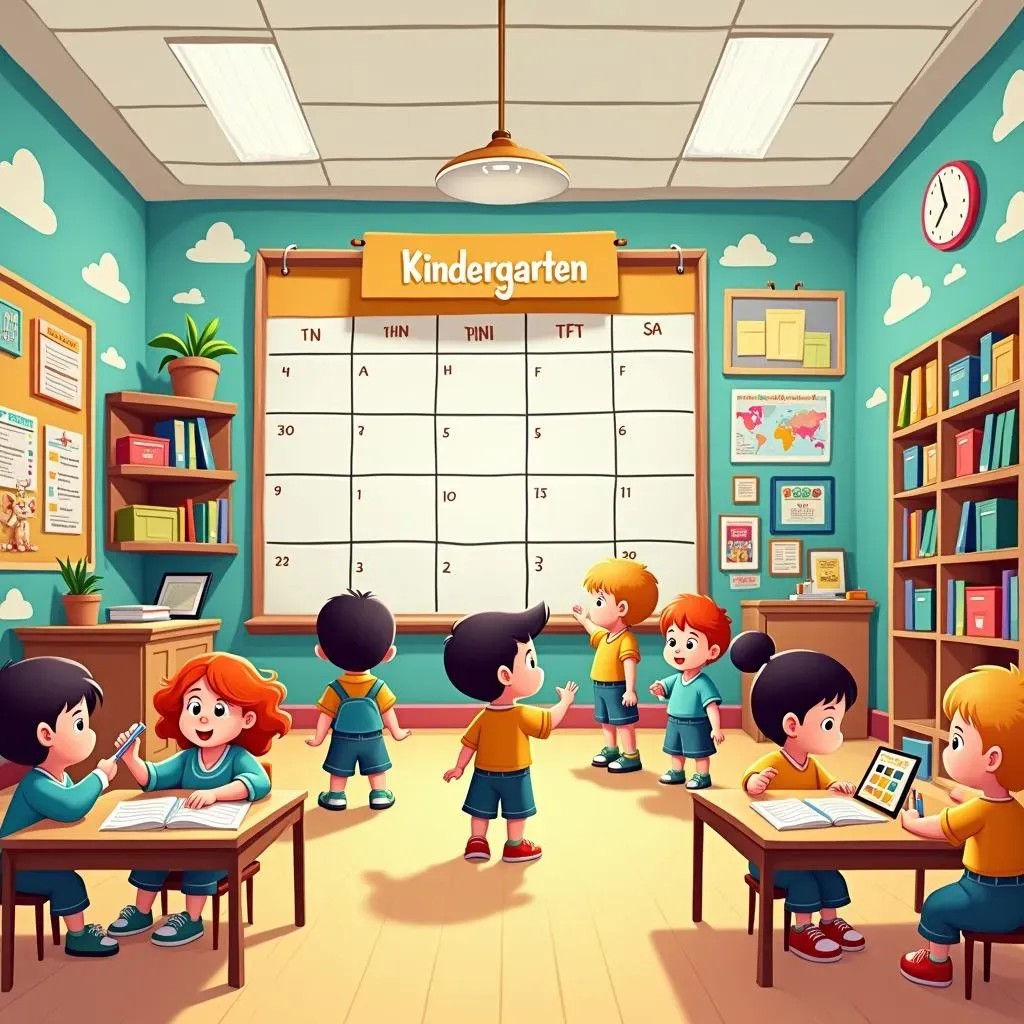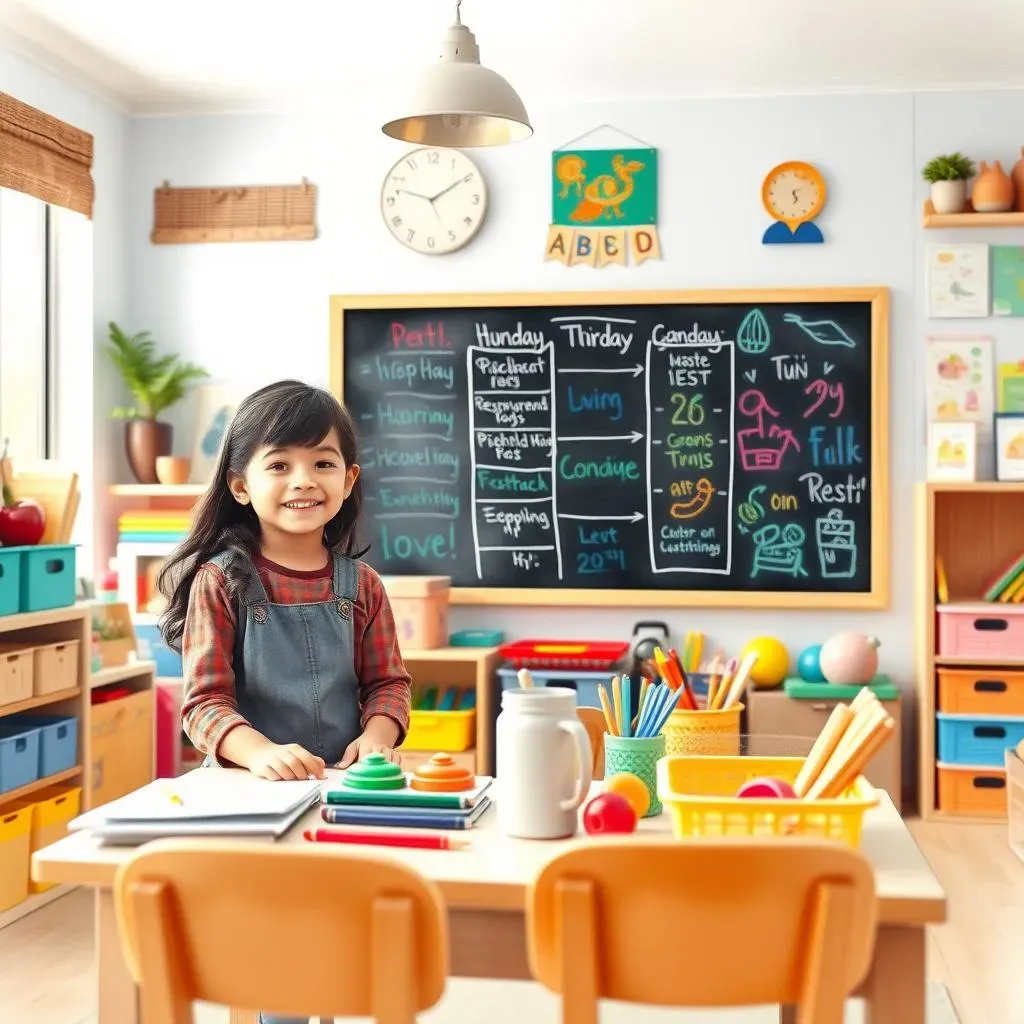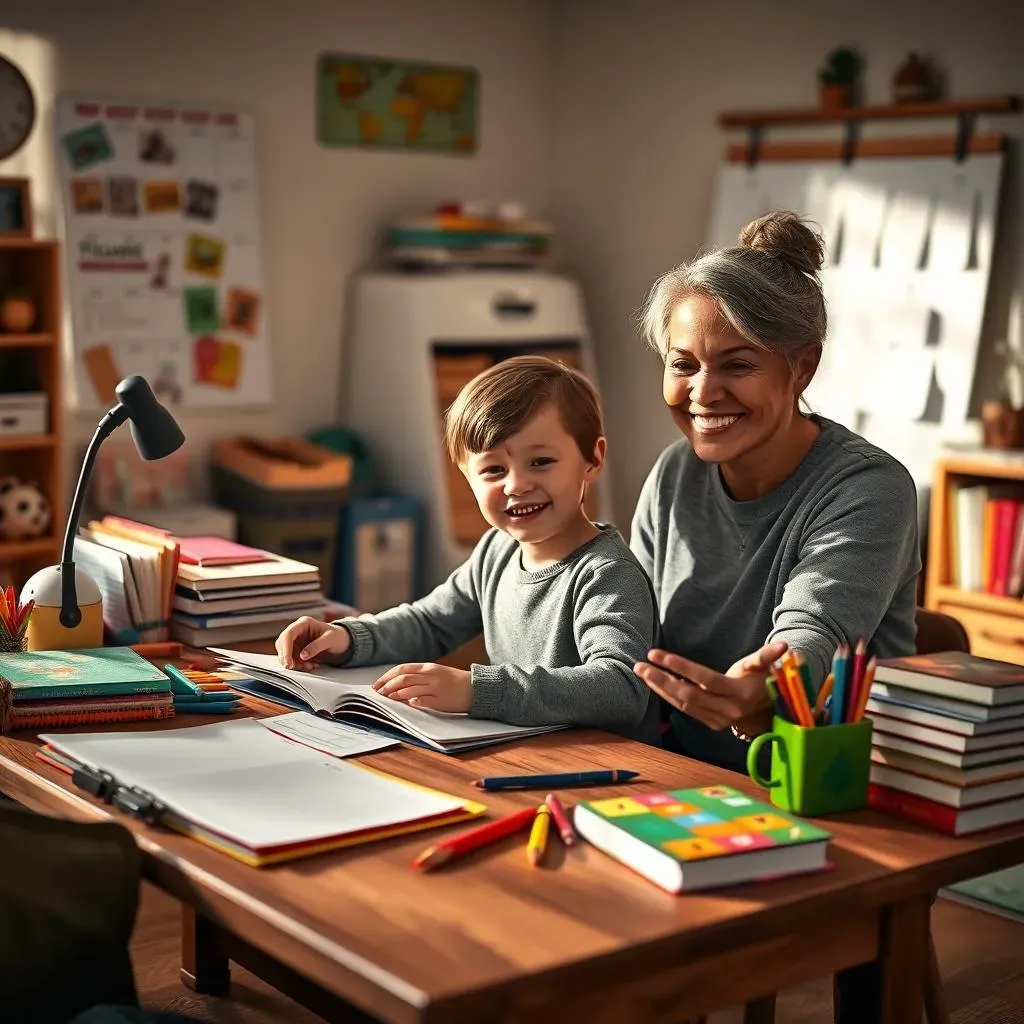Table of Contents
Struggling to figure out a solid daily learning agenda for your homeschool kindergarten student? You're not alone! Many parents feel overwhelmed when trying to structure a day that’s both educational and engaging for their little ones. Forget rigid schedules that suck the joy out of learning. This article will guide you through creating a flexible, fun, and effective daily learning agenda for homeschool kindergarten students. We’ll explore what key elements make up a successful day, give you a sample schedule to get you started, and offer tips on adapting it to fit your child's unique needs and your family's rhythm. We’ll be covering everything from essential subjects to playtime, so you can create a learning experience that sparks curiosity and a love for knowledge. Let’s get started and make homeschooling kindergarten an adventure!
Creating a Balanced Daily Learning Agenda for Homeschool Kindergarten
Creating a Balanced Daily Learning Agenda for Homeschool Kindergarten
Understanding the Need for Balance
Okay, so you're diving into the world of homeschool kindergarten, that’s great! Now, creating a balanced daily learning agenda is key. It’s not just about packing in as much academic stuff as possible. Think of it like making a smoothie. You wouldn't just throw in a ton of spinach and call it a day, right? You need some fruit for sweetness, maybe some yogurt for creaminess, and a little bit of something else to make it delicious. The same goes for your kindergarten schedule. It needs a mix of different activities to keep your little learner engaged and happy.
A balanced agenda is important because it caters to a kindergartener’s short attention span. We're not trying to create mini-adults here, we're trying to make learning fun! If you only have them doing worksheets all day, they will get bored and you'll both be miserable. We need to blend in movement, play, creative activities, and quiet time. A balanced approach helps kids develop not only their academic skills but also their social, emotional, and physical abilities. Remember, happy kids learn better!
Key Areas to Incorporate
So, what should be in this magical mix? Start with the core subjects, of course, like reading, writing, and math. But don’t stop there. Add in some time for creative play, maybe some art or music. Include some movement breaks, maybe a quick dance party or a walk outside. Don’t forget quiet time for reading or puzzles. Think of it as a buffet, offering a variety of options that cater to different needs and interests. It's about making sure that your kid gets a taste of everything that learning has to offer. And hey, don't be afraid to throw in some fun stuff just because it's fun!
When you consider a daily learning agenda, it is about more than just academics. It’s about developing well-rounded little humans. If you're like me, you’re not trying to create little robots who can only recite facts. You want kids who are curious, creative, and happy to learn. It is about instilling a love for learning that lasts a lifetime, not just a year. A balanced daily learning agenda is the best way to achieve this. Trust me, I've been there, it makes a world of difference!
Area | Example Activities | Why It's Important |
|---|---|---|
Core Subjects | Phonics, counting, simple writing | Builds foundational academic skills |
Creative Play | Building blocks, drawing, pretend play | Encourages imagination and problem-solving |
Movement | Dance, outdoor play, yoga | Promotes physical health and energy release |
Quiet Time | Reading, puzzles, coloring | Develops focus and concentration |
Essential Elements of a Kindergarten Daily Learning Agenda
Essential Elements of a Kindergarten Daily Learning Agenda
Alright, let's talk about the core pieces of a solid daily learning agenda. It's like building a house; you need a strong foundation, right? For kindergarten, that foundation includes a few key elements. First off, you’ve got to have some kind of routine, even if it's a loose one. Kids thrive on knowing what's coming next. A predictable structure helps them feel secure and ready to learn. It doesn't need to be rigid, but having a general flow to the day makes a big difference. Then, you have your learning blocks – times dedicated to specific subjects. These don’t have to be long, maybe 20-30 minutes at a time. It's better to have short, focused sessions than long, drawn-out ones where their minds wander.
And of course, you need to balance the learning blocks with other activities, like creative time, play, and movement. Think of it as a recipe; each ingredient is important, and they all work together to create a delicious result. Don't forget to include some time for quiet activities, like reading or puzzles. It’s also crucial to build in flexibility, because let's be real, things don't always go as planned, especially with little ones. Having a plan is great, but being able to adapt it is essential. We're not aiming for perfection; we're aiming for progress and making learning a positive experience.
Element | Description | Why It's Important |
|---|---|---|
Routine | A predictable daily flow | Provides security and readiness to learn |
Learning Blocks | Dedicated time for subjects | Focuses learning and prevents overwhelm |
Creative Time | Art, music, imaginative play | Sparks creativity and problem-solving |
Movement | Physical activity and breaks | Releases energy and aids focus |
Flexibility | Adaptability to change | Allows for unexpected situations |
Sample Daily Learning Agenda for Homeschool Kindergarten Students
Sample Daily Learning Agenda for Homeschool Kindergarten Students
Morning Spark: Starting the Day Right
Okay, let's get into the nitty-gritty of what a sample day could look like. I always like to start with a gentle morning routine. It's not about rushing into schoolwork, it’s about easing into the day. Think of it as a warm-up before the workout. Maybe start with a healthy breakfast, followed by some quiet time. This could be reading a picture book together or doing a simple puzzle. Then, move into some light movement. This could be a quick dance party or some stretches, just to get the blood flowing. The idea is to start the day with positive energy and set a calm tone for learning.
This is also a great time for a quick circle time. You could sing a song, talk about the day, or do a simple calendar activity. It's all about building a sense of routine and getting those little minds ready to focus. It's not about drill sergeant style, it's about creating a smooth transition into the learning part of the day. Remember, a happy start leads to a happy learning day!
Learning Blocks: Focused and Fun
Now, let's dive into the learning blocks. I like to break these up into short, focused sessions. For example, you could do 20-30 minutes of phonics practice, followed by a quick break, then move into math. Keep it light and engaging, think games, hands-on activities, and songs. Don’t make it feel like a chore! If you notice your kiddo getting restless, switch things up. Maybe do some counting with blocks or practice writing letters in shaving cream. Remember, it’s all about keeping it fun and interesting.
After the core subjects, you can incorporate some science or history. Keep it age-appropriate. Maybe read a book about animals or do a simple science experiment with baking soda and vinegar. It's all about sparking curiosity and getting them excited about learning. Don’t try to cram too much into one day. It's better to cover a few topics well than to rush through everything. It's a marathon, not a sprint!
Time | Activity |
|---|---|
8:00 AM - 8:30 AM | Breakfast & Quiet Reading |
8:30 AM - 9:00 AM | Movement & Circle Time |
9:00 AM - 9:30 AM | Phonics Practice |
9:30 AM - 10:00 AM | Math Games |
10:00 AM - 10:30 AM | Science or History |
10:30 AM - 11:00 AM | Creative Play/Art |
11:00 AM - 12:00 PM | Outdoor Play/Lunch |
Afternoon Adventures: Play and Exploration
The afternoon is all about play and exploration. After a morning of focused learning, it's time to let loose. This could be anything from free play with toys to art projects or outdoor time. The goal is to let them use their imagination, get some energy out, and just be kids. Maybe you could build a fort together, go for a nature walk, or have a dance party. It's all about balance. It’s about making sure they get a well-rounded experience, not just academics.
Remember to adjust the schedule to fit your child's needs and your family's rhythm. If your kid is a morning person, do the core subjects then. If they need more movement, build it into the day. It is about finding what works best for you, not following a cookie-cutter approach. The best learning happens when kids are happy and engaged, so make sure to keep it fun! This is your homeschool journey, make it your own!
Adapting Your Daily Learning Agenda for Homeschool Kindergarten Students
Adapting Your Daily Learning Agenda for Homeschool Kindergarten Students
Understanding Your Child's Needs
Okay, so you've got a sample schedule, that's great! But here's the thing, every kid is different. What works for one might not work for another. It's like trying to fit a square peg into a round hole, right? You’ve got to be flexible and adaptable. Some kids are early birds, ready to tackle phonics at 8 AM, while others are more like night owls, who need a bit more time to wake up. Some thrive on structured routines, while others need more freedom and flexibility. It’s about observing your child and figuring out their unique rhythms and preferences. Don’t try to force them into a schedule that doesn’t fit. It’s your homeschool, you make the rules.
Think of it as a journey of discovery, not just about teaching them but also about learning about them. Pay attention to when they're most focused, when they're most restless, and what activities they enjoy the most. Are they more engaged in hands-on projects or do they prefer quiet reading? If they're constantly fidgeting during math, maybe try incorporating movement into the lesson, like counting while jumping. The key is to be responsive and adjust the schedule accordingly. It's not about having the perfect plan; it’s about having a plan that works for your child.
Making Adjustments as You Go
Now, let’s talk about making those tweaks. Don’t be afraid to experiment! If something isn't working, ditch it. You’re not tied to a rigid curriculum. It's your homeschool, you're the boss! Maybe you planned a 30-minute phonics session, but your kid is done after 15. That's okay! Move on to something else. You can always come back to it later. It’s about being responsive and adjusting on the fly. If your child is having an off day, don’t push it. Take a break, do something fun, and try again tomorrow. Remember, the goal is to make learning a positive experience, not a battle.
You might also need to adjust the schedule based on external factors. Maybe you have a doctor’s appointment, or maybe you just want to take advantage of a beautiful day and go to the park. It's all about being flexible and adaptable. Don't stress about sticking to the schedule perfectly. Life happens. The beauty of homeschooling is that you can make it work for you and your family. You are not tied to the bell schedule of a public school. Embrace the freedom and flexibility that it offers.
Challenge | Adaptation |
|---|---|
Short attention span | Break learning into smaller chunks |
Restlessness | Incorporate movement into lessons |
Off days | Take breaks or try different activities |
External factors | Adjust schedule as needed |
Embracing the Journey
Ultimately, adapting your daily learning agenda for homeschool kindergarten students is an ongoing process, not a one-time event. It’s about constantly evaluating, tweaking, and adjusting to fit your child's evolving needs and your family's dynamics. It's a journey of discovery, not just for your child but also for you as a homeschool parent. You’ll learn a lot about yourself, your child, and what works best for your family. Don’t be afraid to make mistakes, it's all part of the process. The most important thing is to be patient, flexible, and always keep the goal in mind, which is to create a positive and engaging learning environment for your child.
So, don't stress about having the perfect schedule. There is no such thing. Focus on creating a learning environment that is nurturing, fun, and tailored to your child's unique needs. You’ve got this! Remember, every family's homeschool journey is different, and that's okay. Embrace the adventure, enjoy the process, and celebrate the small wins along the way. It is your homeschool journey, make it amazing!
Wrapping Up Your Kindergarten Homeschool Day
Creating a daily learning agenda for your homeschool kindergarten student doesn't have to be a chore. It's about crafting a rhythm that works for your family, one that balances structured learning with the freedom to explore and play. Remember, flexibility is key. Some days will be smooth, others might feel like a chaotic art project. The goal is to foster a love of learning, not to tick off boxes. So, take these ideas, make them your own, and enjoy this special time of discovery with your little one. You've got this!